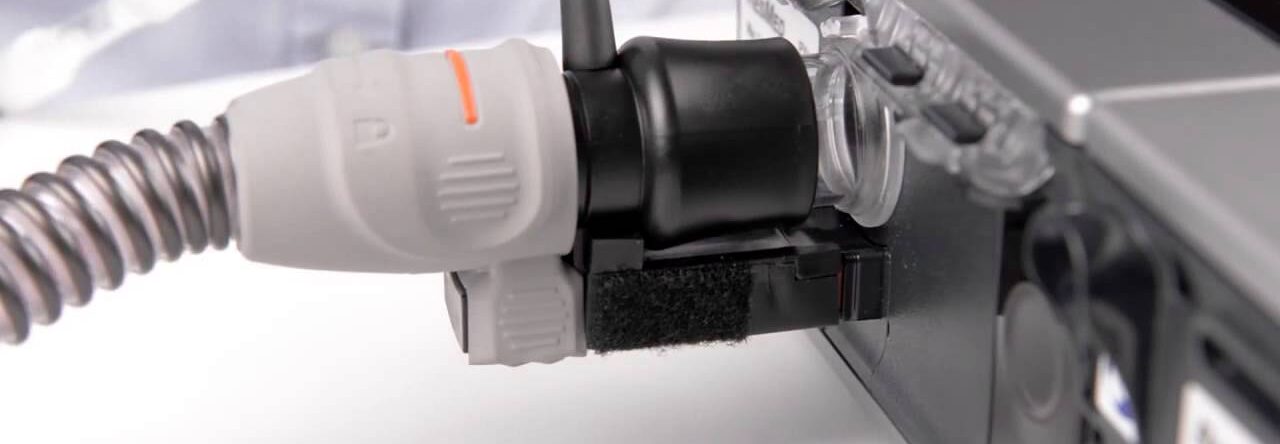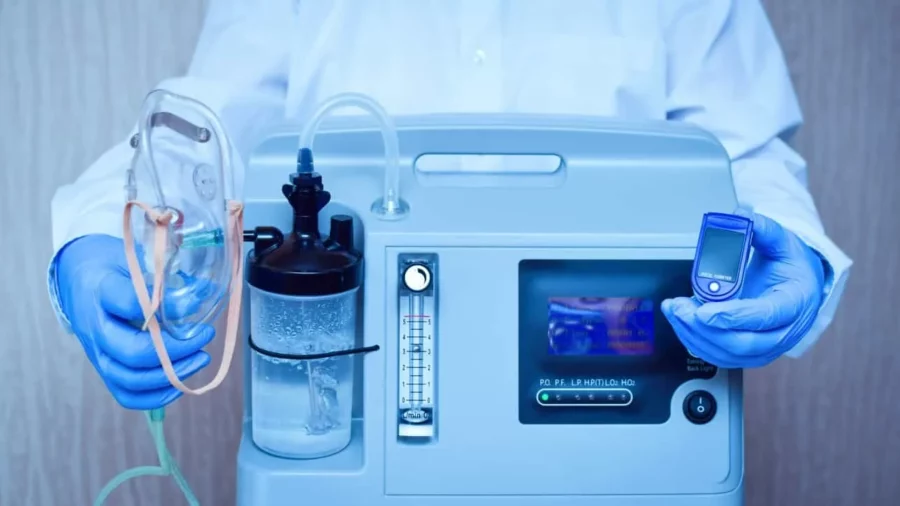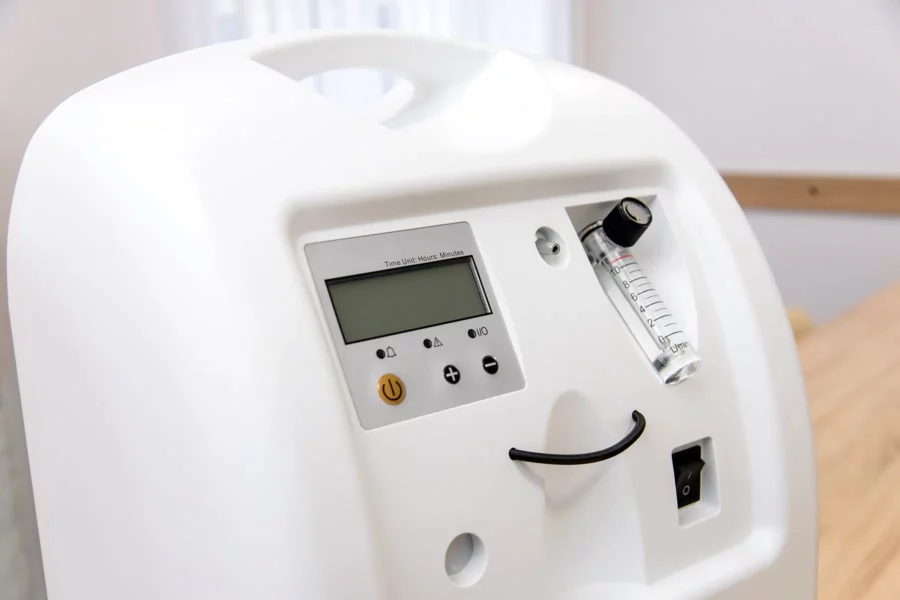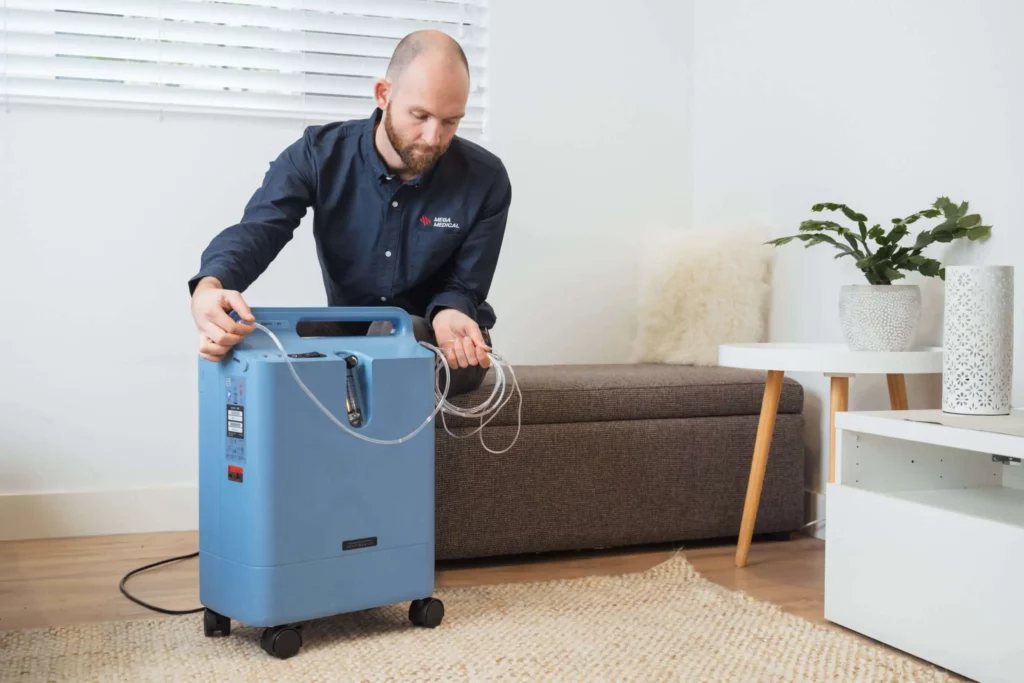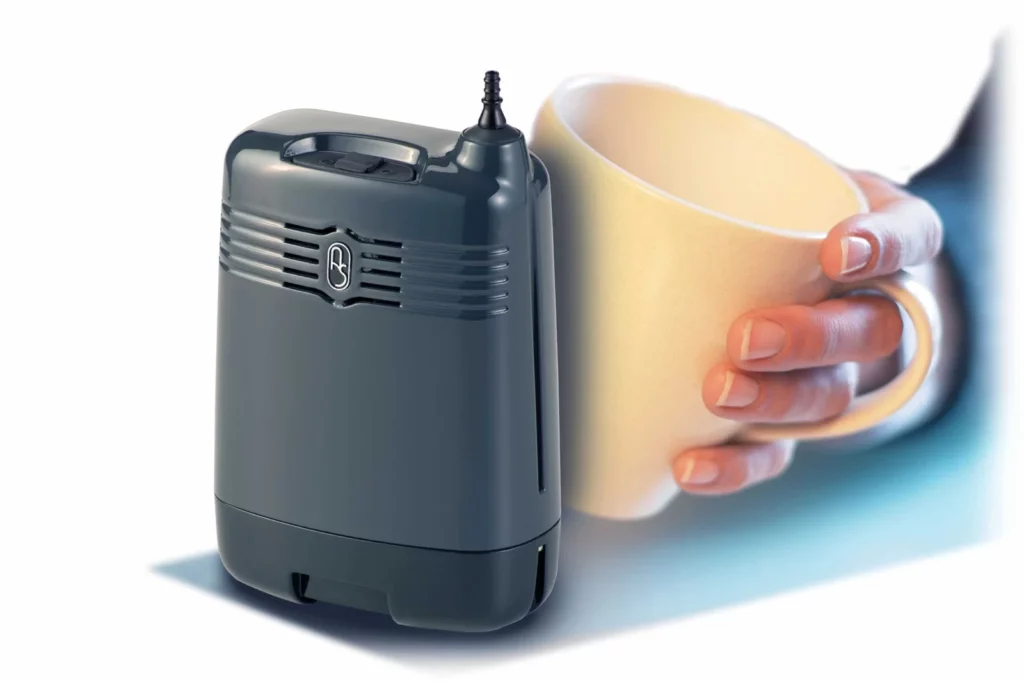What Are Portable Oxygen Concentrators and Who Needs Them?
A portable oxygen concentrator (POC) is a lightweight, battery-powered medical device that extracts oxygen from ambient air and delivers concentrated oxygen to patients requiring supplemental oxygen therapy. Unlike traditional oxygen tanks that store a finite amount of compressed oxygen, POCs continuously generate oxygen on demand, making them ideal for active lifestyles and travel.
Many patients often ask, “where can I buy or rent a portable oxygen concentrator machine?”—these devices are available through medical equipment suppliers, online health stores, and authorized rental providers, offering flexible options to suit both short-term and long-term oxygen therapy needs.
The device works by drawing in room air, removing nitrogen through molecular sieve technology, and delivering purified oxygen through a nasal cannula or mask. Most modern POCs weigh between 2 to 5 kilograms and can operate on battery power for several hours, with the option to recharge using standard electrical outlets or car adapters.
Who Requires Oxygen Therapy?
Oxygen therapy patients typically include individuals diagnosed with chronic respiratory conditions that compromise their body’s ability to maintain adequate blood oxygen levels. Common medical conditions requiring POCs include:
- Chronic Obstructive Pulmonary Disease (COPD) – including emphysema and chronic bronchitis
- Pulmonary fibrosis – scarring of lung tissue that reduces oxygen absorption
- Severe asthma – when standard treatments fail to maintain proper oxygen saturation
- Cystic fibrosis – a genetic condition affecting lung function
- Heart failure – where the heart cannot pump sufficient oxygenated blood
- Sleep apnoea – particularly when combined with other respiratory conditions
- Pneumonia or COVID-19 recovery – requiring temporary oxygen support
Doctors prescribe supplemental oxygen when blood oxygen saturation levels consistently fall below 88-90%, as measured by pulse oximetry or arterial blood gas tests.
Why Choose Portable Over Stationary Systems?
The benefits of portability and continuous oxygen supply transform daily life for oxygen therapy patients. Traditional stationary concentrators tether patients to their homes, whilst heavy oxygen cylinders require frequent refills and offer limited mobility.
POCs deliver three significant advantages:
- Freedom of movement – Patients can maintain active social lives, attend appointments, shop, and visit family without planning around oxygen supply limitations.
- Travel capability – Most POCs meet airline approval standards for in-flight use, enabling patients to explore new destinations without compromising their health needs.
- Enhanced comfort – With no need for bulky equipment or constant tank replacements, users experience greater ease during everyday activities and sleep.
These benefits empower individuals with respiratory conditions to lead fulfilling lives while effectively managing their treatment requirements.
Where Can Patients Rent Portable Oxygen Concentrators?
Patients can rent portable oxygen concentrators through specialised medical equipment suppliers, both locally in Australia and internationally. These rental providers offer flexible arrangements designed to accommodate varying patient needs, from temporary recovery periods to extended therapy requirements.
Rental Providers in Australia
Mega Medical stands out as a leading supplier offering comprehensive rental services for portable oxygen concentrators across Australia. The company provides both stationary and portable units from trusted manufacturers, ensuring patients receive reliable equipment backed by clinical expertise. Their service includes nationwide delivery, making oxygen therapy accessible regardless of location.
Australian patients benefit from a well-established network of medical equipment suppliers who understand local healthcare requirements and maintain high standards for equipment quality. These providers work closely with healthcare professionals to ensure proper device selection and ongoing support throughout the rental period.
Rental Duration Options
Rental terms typically fall into two categories:
- Short-term rentals: Ideal for post-surgical recovery, temporary health setbacks, or trial periods before purchasing. These arrangements usually span from one week to several months.
- Long-term rentals: Suited for chronic conditions requiring extended oxygen therapy. Patients can rent equipment for six months, a year, or longer with flexible renewal options.
The flexibility in rental duration allows patients to adjust their arrangements as medical needs change without the financial commitment of purchasing equipment outright.
What’s Included in Rental Services
Reputable rental providers bundle essential services with their equipment hire:
- Home delivery and setup: Technicians deliver the concentrator directly to the patient’s residence and provide initial setup guidance
- Oxygen specialist consultations: Trained specialists assess patient suitability and recommend appropriate flow settings
- Technical support: Ongoing assistance via phone or in-person visits for troubleshooting and maintenance queries
- Equipment maintenance: Regular servicing and immediate replacement if devices malfunction
- Travel compliance guidance: Advice on using portable units during air travel and interstate trips
These comprehensive support services distinguish professional medical equipment suppliers from basic rental companies. Patients receive not just a device but a complete care package ensuring safe and effective oxygen therapy.
However, it’s important to note that during these unprecedented times, infection control measures are crucial when renting medical equipment such as portable oxygen concentrators. The inclusion of expert support proves particularly valuable for first-time oxygen therapy users who may have questions about device operation, battery management, or adjusting to portable oxygen use in daily activities. Click here to get what does an Oxygen machine for home do and who needs one?
What Are the Costs and Requirements for Renting a Portable Oxygen Concentrator?
Costs of Renting a Portable Oxygen Concentrator
POC rental cost typically begins at approximately $115 per week for popular models like the Inogen portable concentrator. This baseline pricing provides patients with access to medical-grade oxygen therapy without the substantial upfront investment required for purchase. Rental rates vary depending on the specific model, features, and rental duration selected.
The Inogen portable concentrator rental price represents one of the most competitive options in the market. Patients choosing weekly rentals benefit from flexibility, particularly when oxygen therapy needs are temporary or uncertain. Extended rental periods often come with reduced weekly rates, making long-term arrangements more economical for those requiring ongoing oxygen support.
Additional Costs Beyond Base Rental Fees
Insurance fees for oxygen concentrators add to the total rental expense. These fees protect both the rental provider and the patient against equipment damage, loss, or malfunction during the rental period. Insurance charges typically range from $10 to $25 per week, depending on the equipment value and coverage level. Some providers include basic insurance in their rental packages, whilst others offer it as an optional add-on.
Delivery charges may apply depending on location, though many reputable suppliers include delivery and collection services within their standard rental agreements. Patients should clarify whether consumables such as nasal cannulas, tubing, and filters are included or require separate purchase.
Medical Documentation Requirements
A valid medical prescription is mandatory for renting portable oxygen concentrators in Australia and most other countries. Healthcare providers must document the patient’s oxygen therapy requirements, including prescribed flow rates and duration of use. This prescription ensures appropriate equipment selection and legal compliance with medical device regulations.
Rental companies cannot dispense oxygen concentrators without proper medical authorisation. Patients should obtain their prescription before contacting rental suppliers to streamline the rental process.
Professional Assessment by Oxygen Specialists
Oxygen specialists play a critical role in determining patient suitability for specific POC models. These trained professionals review medical prescriptions, assess individual oxygen requirements, and evaluate lifestyle factors such as activity levels and travel needs. Their expertise ensures patients receive equipment capable of meeting their therapeutic demands.
The assessment process typically involves:
- Review of oxygen saturation levels and flow rate requirements
- Evaluation of mobility needs and physical activities
- Consideration of travel plans or frequent trips
- Discussion of any specific preferences regarding POC features
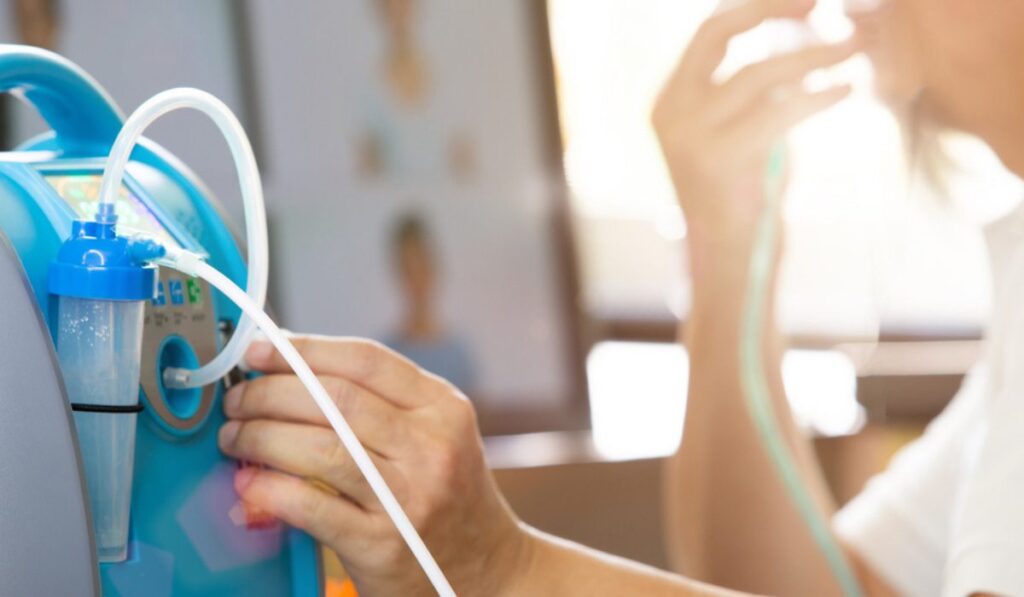
Where Can Patients Buy Portable Oxygen Concentrators?
Patients can buy portable oxygen concentrator online through specialised healthcare suppliers that stock medical-grade equipment. Air Liquide Healthcare stands as one of Australia’s leading providers, offering a comprehensive range of portable oxygen machines for outright purchase with delivery and clinical support included.
Trusted Brands and Healthcare Suppliers
The market for healthcare suppliers POC purchase features several established manufacturers known for reliability and performance. Leading trusted brands portable oxygen machines available through Australian suppliers include:
- Zen-O – Known for dual-mode operation (continuous and pulse flow) and robust build quality
- Inogen – Popular for lightweight design and long battery life, particularly the Inogen One G3 and G5 models
- Philips Respironics – Offers the SimplyGo series with high oxygen output capacity
- Caire – Provides the FreeStyle Comfort model with ergonomic design features
These brands have undergone rigorous testing and certification, ensuring they meet Australian therapeutic goods standards. Healthcare suppliers typically provide detailed specifications, user manuals, and warranty coverage with each purchase.
Purchasing Process and Requirements
Buying a portable oxygen concentrator requires a valid prescription from a qualified medical practitioner. Suppliers conduct clinical assessments to match the device specifications with prescribed oxygen flow rates and usage patterns. The purchase process includes:
- Prescription verification and clinical review
- Device selection based on oxygen requirements and lifestyle needs
- Training on operation, maintenance, and troubleshooting
- Warranty registration and ongoing technical support access
Advantages of Owning Versus Renting
Ownership becomes cost-effective for patients requiring long-term oxygen therapy beyond six months. The upfront investment eliminates recurring weekly rental fees, with most units lasting five to seven years with proper maintenance. Owners gain complete flexibility in usage without rental agreement restrictions or return deadlines.
Purchasing also provides equipment customisation options such as additional batteries, carrying cases, and vehicle power adapters tailored to individual mobility requirements. Patients who travel frequently benefit from having dedicated equipment always available without coordinating rental logistics across different locations.
The financial breakeven point typically occurs around 12-18 months of continuous use, after which ownership becomes more economical compared to renting in the long run.
Are Portable Oxygen Concentrators Approved for Travel?
Yes, many portable oxygen concentrators are specifically designed and approved by airlines for in-flight use. These travel-friendly devices meet strict aviation safety standards set by regulatory bodies like the Federal Aviation Administration (FAA), making it possible for oxygen-dependent patients to maintain their therapy whilst travelling.
Which POC Models Are Airline-Approved?
Not all oxygen concentrators qualify for air travel. Airline approved POC models must meet specific criteria, including battery operation, size restrictions, and safety certifications. Most major airlines accept devices that appear on the FAA’s approved list, which includes popular brands such as:
- Inogen One G3, G4, and G5 – lightweight units with long battery life
- Philips Respironics SimplyGo Mini – compact design ideal for cabin use
- Zen-O Lite – versatile option with pulse-dose delivery
- AirSep Focus and FreeStyle Comfort – ultra-portable models
Each airline maintains its own policies regarding portable oxygen machine travel regulations, so patients must contact their carrier at least 48-72 hours before departure to confirm acceptance and complete necessary documentation.
What Documentation Do Travellers Need?
Airlines typically require passengers to provide:
- A physician’s statement confirming the medical necessity for oxygen therapy
- Proof that the device is FAA-approved (manufacturer’s label or documentation)
- Notification of oxygen flow rate and duration needed during the flight
- Confirmation of sufficient battery capacity for 150% of expected flight time
Patients should carry spare batteries in their hand luggage, as checked baggage is not permitted for lithium-ion batteries. Battery terminals must be protected to prevent short circuits.
How Do Rental Providers Support Travel Compliance?
When you travel with portable oxygen concentrator equipment from rental companies like Mega Medical, they provide comprehensive travel assistance. These suppliers offer:
- Pre-travel consultations to verify your device meets airline requirements
- Documentation packages including manufacturer specifications and FAA approval certificates
- Battery rental options to ensure adequate power supply for extended journeys
- Travel cases and accessories designed for safe transport through security checkpoints
Rental providers familiar with portable oxygen machine
How to Choose a Reputable Supplier for Buying or Renting?
Selecting the right supplier determines whether your oxygen therapy experience will be seamless or frustrating. A reputable POC supplier should offer proven equipment from established brands like Inogen, Philips Respironics, or Zen-O, backed by transparent pricing and comprehensive service agreements.
What Product Quality Indicators Matter Most?
Brand reputation serves as your first quality checkpoint. Suppliers partnering with internationally recognised manufacturers demonstrate commitment to reliability and safety standards. Check whether the supplier provides detailed specifications for each model, including oxygen output capacity, battery life, and weight specifications.
Certification and compliance documentation prove the equipment meets Australian medical device regulations. Ask potential suppliers about their quality assurance processes, maintenance protocols, and how frequently they service rental units. Equipment age matters too—rental units should be well-maintained recent models rather than outdated inventory.
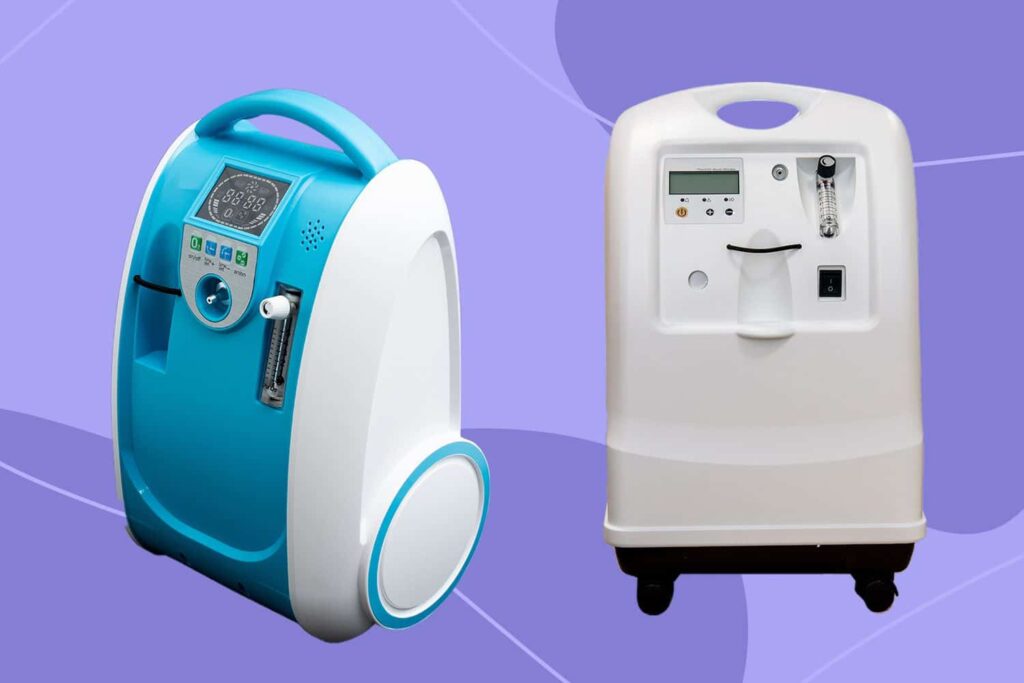
Why Are Delivery and Support Services Non-Negotiable?
Comprehensive delivery services eliminate logistical headaches when you need oxygen therapy urgently. Quality suppliers like Mega Medical include delivery as standard, bringing equipment directly to your home with setup assistance. This service becomes critical for patients with limited mobility or those living in regional areas.
Ongoing support separates exceptional suppliers from mediocre ones. Look for providers offering:
- 24/7 technical support hotlines for troubleshooting
- Regular maintenance check-ups for rental equipment
- Rapid replacement services if devices malfunction
- Training sessions on proper equipment use and care
- Travel compliance guidance for airline-approved models
How Should Patient Needs Shape Supplier Selection?
Patient-centred supplier selection starts with understanding your specific medical requirements and lifestyle demands. An oxygen specialist should assess your prescription needs, mobility patterns, and daily activities before recommending equipment. Suppliers demonstrating this consultative approach prioritise health outcomes over sales targets.
Consider your usage scenarios carefully. Frequent travellers need suppliers stocking FAA-approved portable models with extended battery options. Home-based patients might prioritise quiet operation and energy efficiency. Active individuals require lightweight units with pulse-dose delivery systems.
Budget flexibility matters when choosing between rental and purchase options. Reputable suppliers present both pathways clearly, explaining long-term cost implications without pressure tactics. Short-term rental suits trial periods or temporary.
Frequently Asked Questions (FAQs) About Portable Oxygen Concentrators
A portable oxygen concentrator (POC) is a compact medical device that extracts oxygen from surrounding air, removes nitrogen through molecular sieve technology, and delivers purified oxygen to patients via a nasal cannula or mask. Unlike oxygen cylinders that require refilling, POCs generate oxygen continuously, making them ideal for mobility and travel.
2. Who needs a portable oxygen concentrator?
POCs are prescribed to individuals with chronic respiratory or cardiac conditions that cause low blood oxygen levels. These include COPD, pulmonary fibrosis, cystic fibrosis, severe asthma, heart failure, sleep apnoea, and post-COVID-19 or pneumonia recovery. A medical professional determines the need for oxygen therapy through oxygen saturation tests.
3. What are the advantages of using a portable oxygen concentrator over traditional systems?
Portable oxygen concentrators offer greater mobility, independence, and convenience. They eliminate the need for heavy oxygen tanks, allow users to travel freely, and provide consistent oxygen delivery without constant refills. Many models are lightweight and airline-approved for travel use.
4. Where can I buy or rent a portable oxygen concentrator machine?
You can buy or rent POCs through authorized medical equipment suppliers such as Mega Medical and Air Liquide Healthcare in Australia. These providers offer flexible rental terms, home delivery, and support services to ensure proper setup and compliance with oxygen therapy requirements.
5. How much does it cost to rent a portable oxygen concentrator?
The cost typically starts from around $115 per week, depending on the model and rental duration. Additional costs may include insurance, delivery, and consumables such as nasal cannulas and tubing. Long-term rentals often come with discounted rates for extended use.
6. Do I need a prescription to buy or rent a portable oxygen concentrator?
Yes. A valid medical prescription from a licensed healthcare provider is required to purchase or rent a POC. The prescription specifies oxygen flow rates and therapy duration, ensuring compliance with medical standards and proper device selection.
7. Are portable oxygen concentrators safe for air travel?
Yes. Most modern POCs, such as Inogen One G5, Philips Respironics SimplyGo Mini, and Zen-O Lite, are FAA-approved for in-flight use. Passengers must notify their airline in advance, provide a doctor’s statement, and carry sufficient battery power for 150% of the total flight duration.
8. What support services are included when renting a POC?
Reputable suppliers offer comprehensive rental packages including home delivery and setup, 24/7 technical support, regular maintenance, and immediate replacement in case of malfunction. Many also provide travel compliance assistance and consultations with oxygen specialists.
9. Should I rent or buy a portable oxygen concentrator?
Renting is ideal for short-term or temporary oxygen therapy, such as post-surgery or recovery periods. Buying becomes more economical for long-term use (over six months), as ownership eliminates weekly rental fees and provides full control over device usage and accessories.

